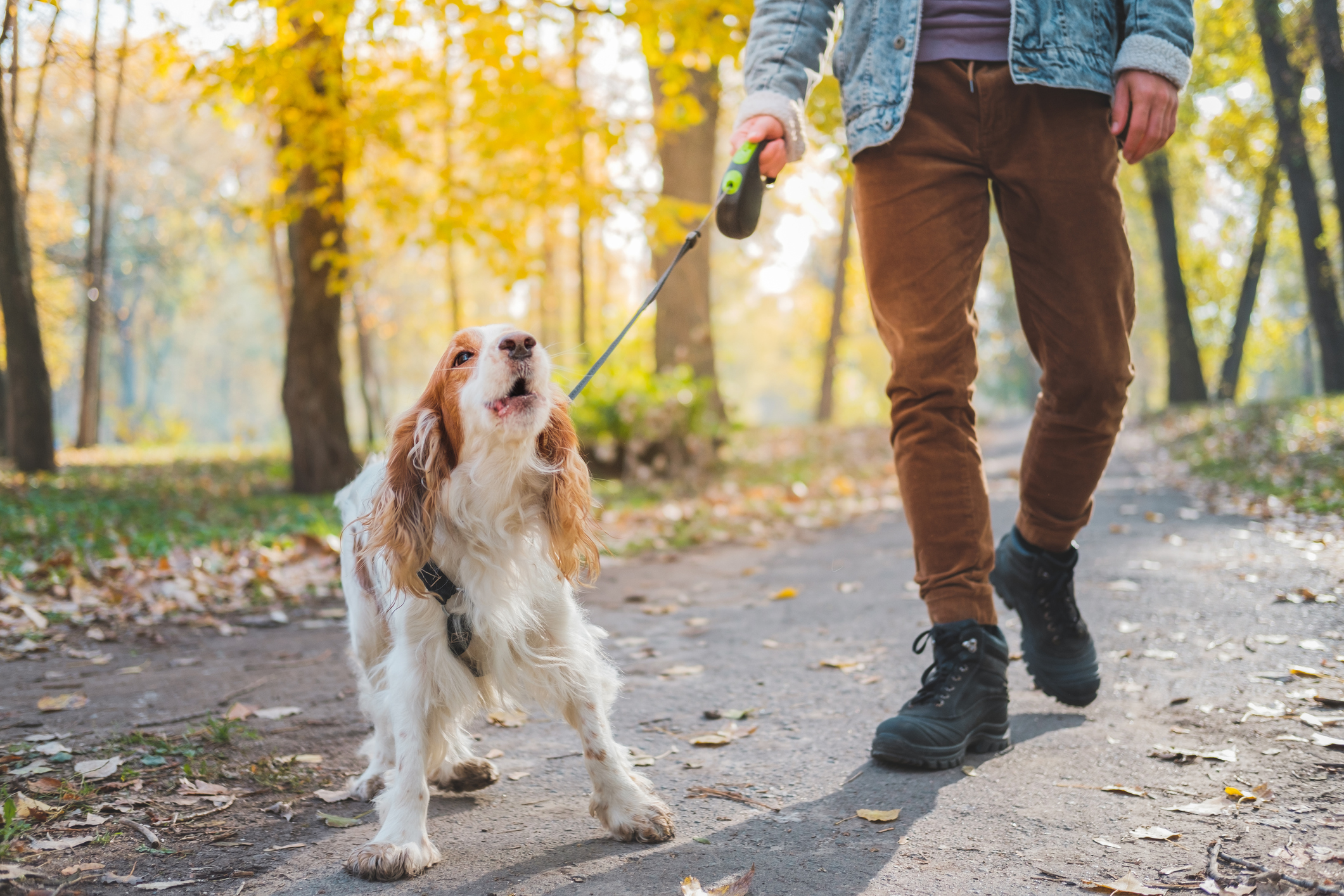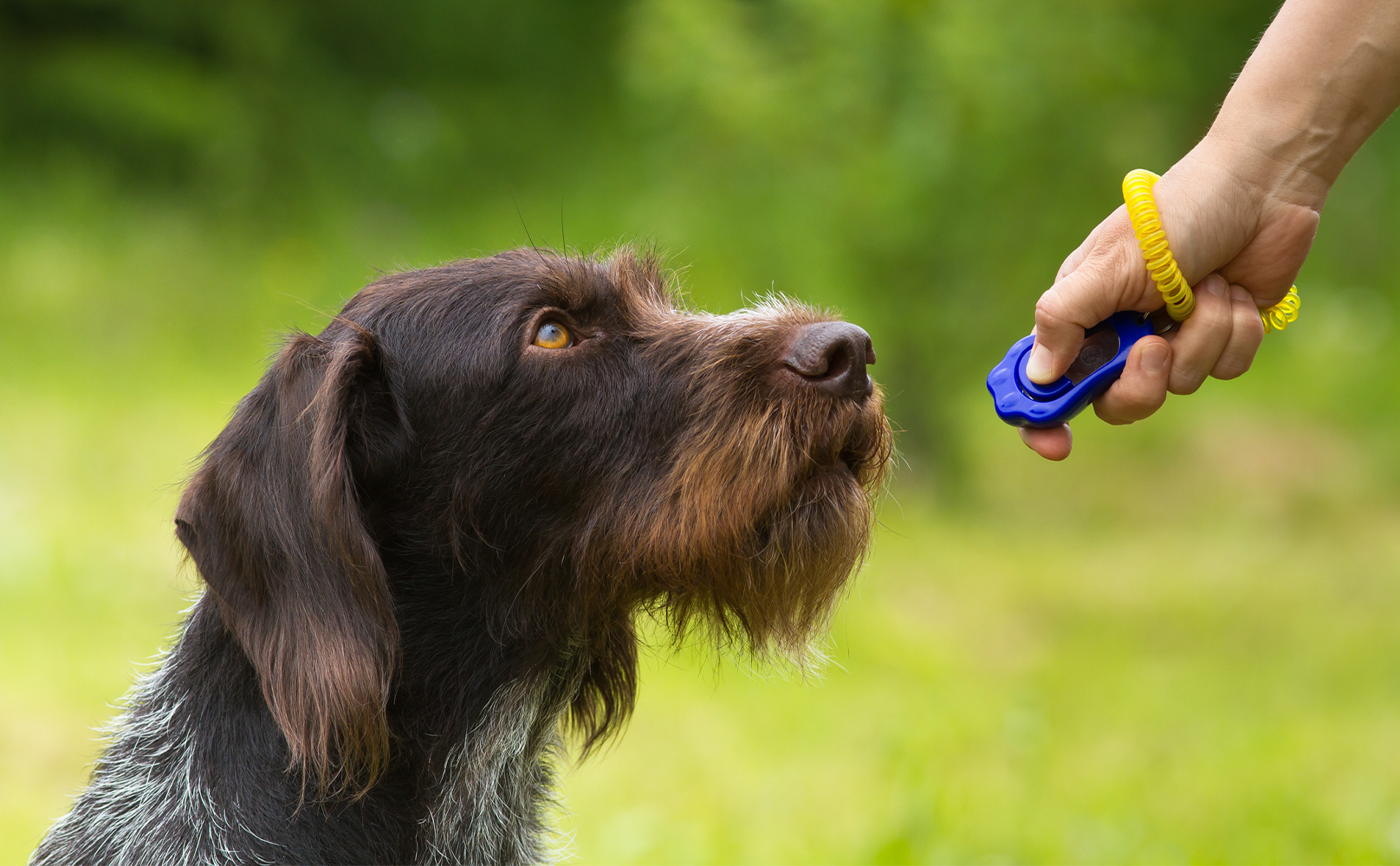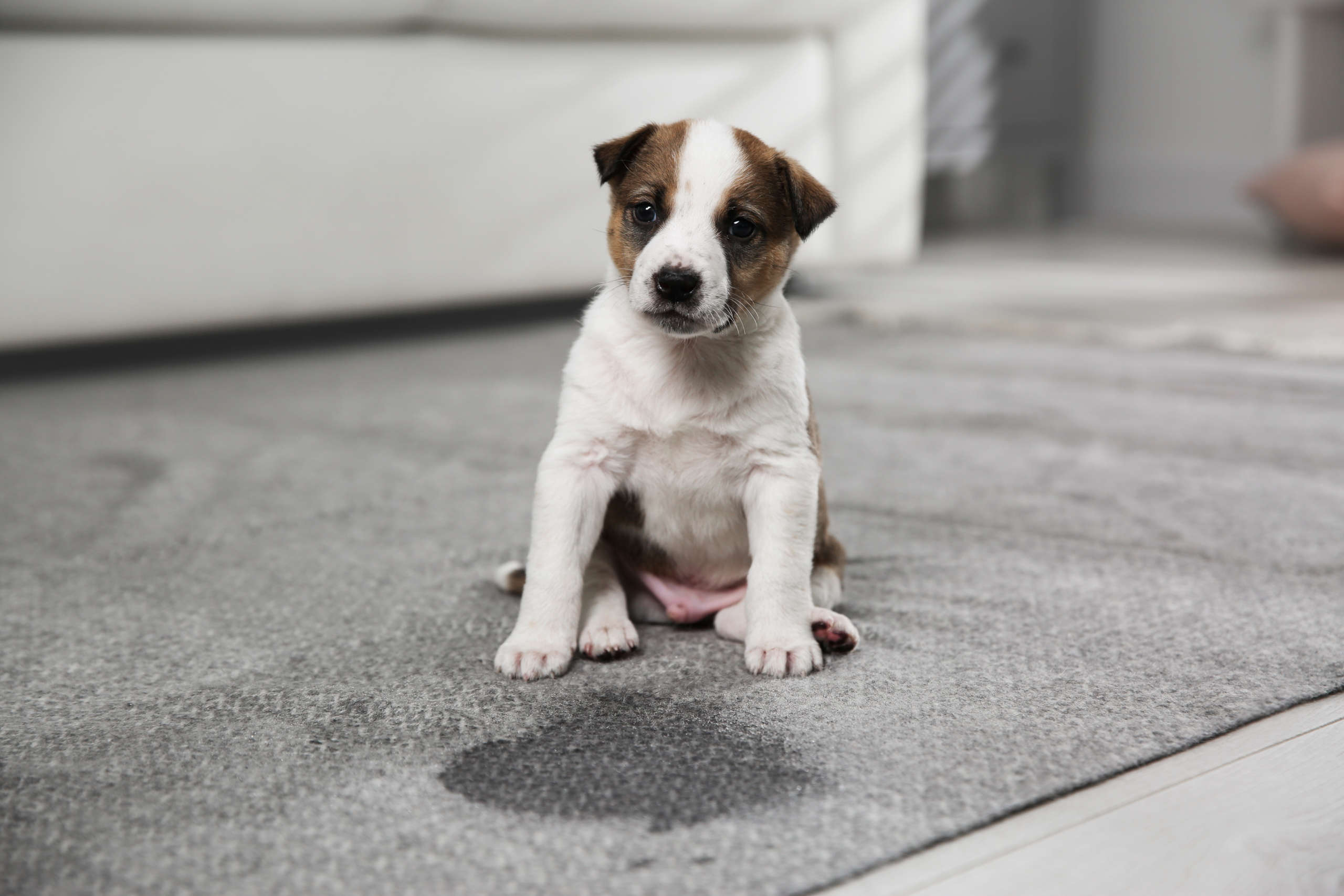Crate training your dog or puppy is a process that can at first seem daunting, but by approaching training slowly and intentionally, you can help them build positive associations and view the crate as a safe space.
Why You Should Crate Train
Having a safe and comfortable means of confining your puppy when you aren’t able to supervise is arguably the biggest benefit of crate training. Although it’s important to puppy-proof as much of your home as possible, crating prevents your puppy from having access to potentially harmful (yet chewable) items. Being confined in their crate should not cause anxiety or discomfort if acclimated properly.
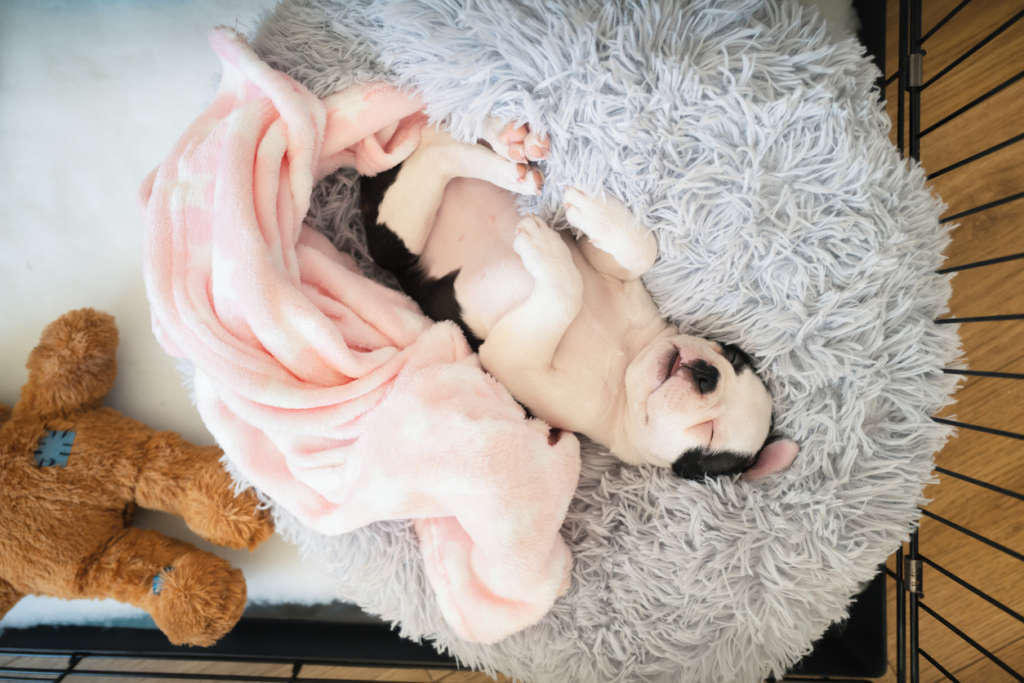

1. Potty Training Support
Puppies (generally speaking) don’t want to go potty where they sleep. Particularly for when you are unable to supervise, and when not used as punishment for potty training, limited stretches of time in the crate can help keep accidents at bay.
2. Important Skills For Intermittent Or Emergency Use
Even if you don’t plan to use the crate regularly in your home, training dogs to use it as a source of comfort and safety can be an important skill set in many scenarios. For example, if you ever need to evacuate your home because of a natural disaster, are traveling with your dog, or if your dog needs to recover from surgery or a medical procedure (i.e., after a spay/neuter), establishing the crate as a stress-free zone is essential.
How To Choose The Right Crate Size
Puppies should be able to comfortably sit, stand, lie down fully extended, and turn around inside their crate.
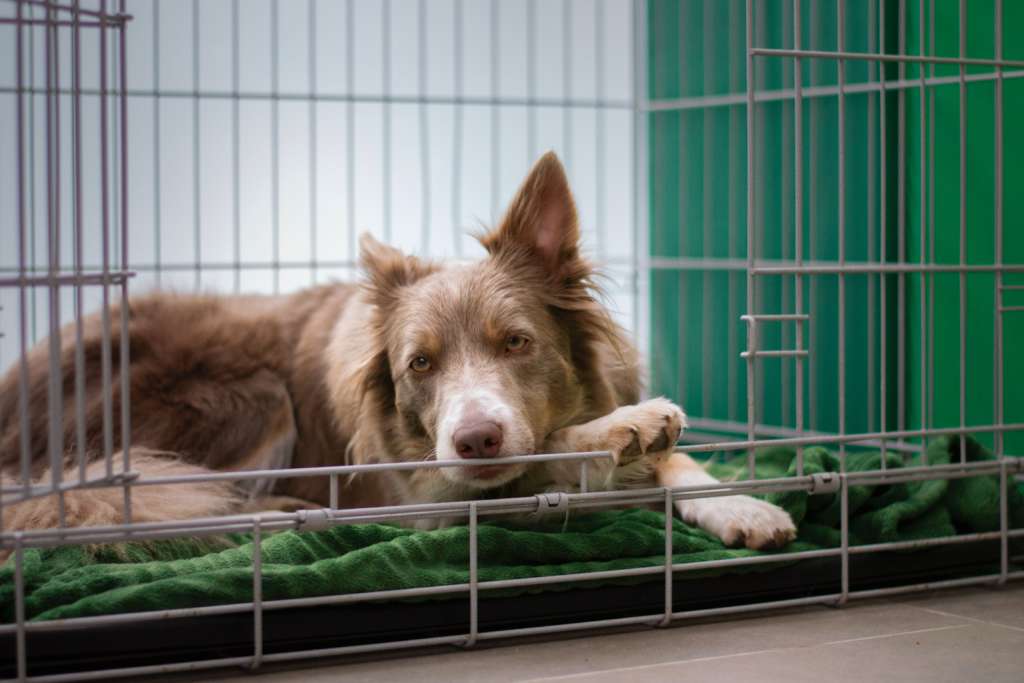

Avoid choosing a crate that is much larger than your puppy unless it includes a barrier to allow the interior of the crate to grow as they do. If the crate is too large, your puppy will likely use one part of the crate to go potty, and the remaining space for sleeping—we don’t want that!
How Long Can You Crate?
Most of us are unable to spend all day every day with a new puppy, but how long can you realistically leave them alone? The answer depends on a lot of factors: your dog’s age, any prior experience they have with the crate, and their comfort with being in a crate, to name a few.
For puppies, the general rule of thumb is that they can hold their bladder and be crated one hour for every month of life, with a maximum of 4-6 hours daily for both puppies and adult dogs. Keep in mind, it’s best to start small and increase that time length as your puppy acclimates rather than crating them, hoping for the best, and letting them cry it out while you leave. This will certainly not help them understand that the crate is a place to relax and be calm!
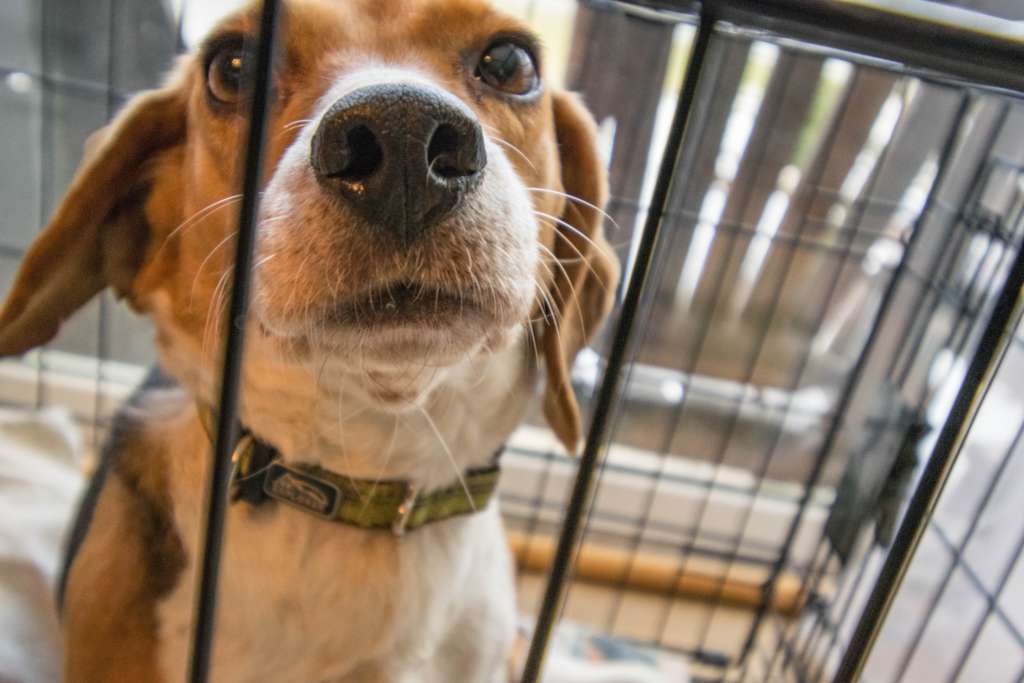

You’ll also want to be thoughtful about your dog or puppy’s daily routine. For example, if your puppy sleeps in a crate at night, they shouldn’t be spending a significant amount of time in a crate during the day. If you work long hours, you’ll need to schedule a dog sitter, walker, or leave your puppy in a larger space in your home.
Where Is The Best Place To Put The Crate?
You may need to experiment with where in the house you put your puppy’s crate. Some dogs prefer the crate to be in an out-of-the-way, quiet place, while other puppies will prefer to have their crate in a more central area of the home so they can still see what’s going on.
3 Ways To Introduce Your Puppy To The Crate
First things first, we want our puppy’s initial associations with the crate to be their choice.
1. Let Them Explore
Have the crate out in your home with the door open, and let your puppy explore the crate the same way they would any other part of the home. You can put a bed and toys inside the crate to entice them, but then give your puppy the opportunity to explore on their own time.
2. Use Treats
If you notice your puppy engaging with the crate, you can put one or multiple feet (yours!) inside, praise your puppy, and drop a treat in as a reward. Continue to let them explore! Chances are, they’ll quickly start to positively associate being in the crate with good things happening.
3. Serve Meals Inside
You can also start to feed meals in the crate, at first with the door open, and then closed. This will help them continue to develop positive associations with the crate by pairing it with something of delicious value, like breakfast or dinner. Soon your puppy will be running to their crate when the food bowl comes out!
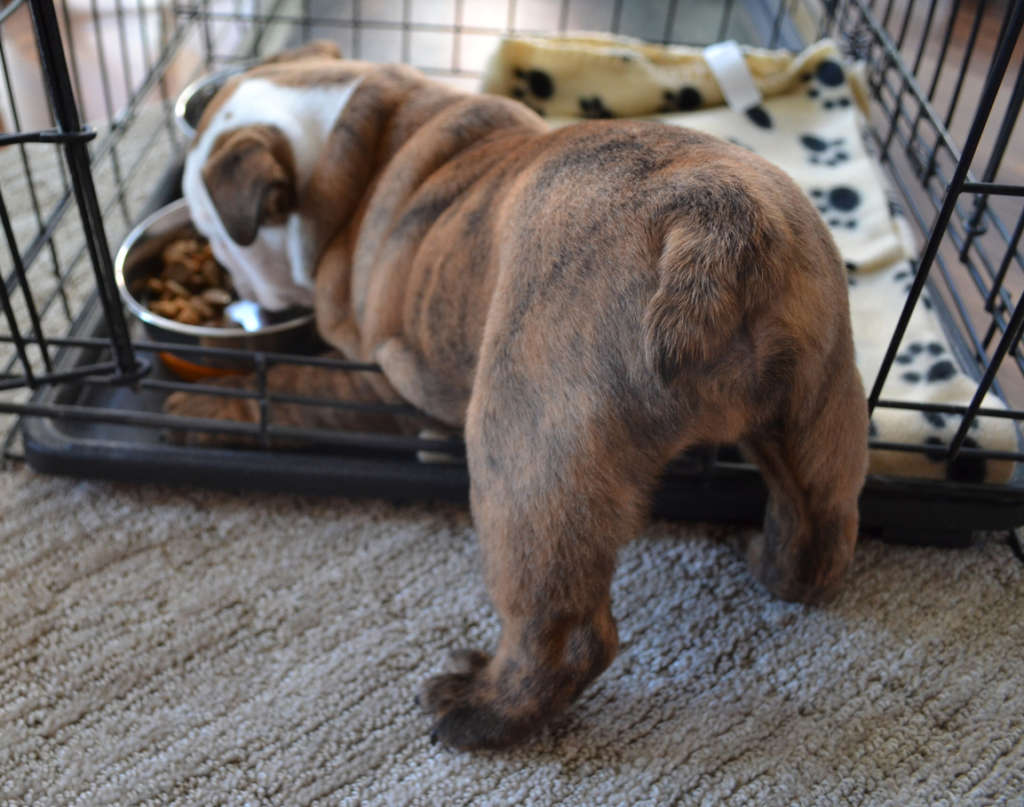

The Importance Of Building Positive Associations
When starting to crate train a dog or puppy of any age, the goal should be to help them develop a positive association with the crate. Dogs do not come pre-programmed knowing that a crate is a good or comfortable place to be, though they do have a natural instinct to den—it’s something that puppies need to learn and develop. The easiest way to do this? Pair crate time with (safe) toys, treats, and anything else they find rewarding.
Related Article: Positive Reinforcement Training For Dogs: What It Is & How It Works
Rubber chew-safe toys that can be stuffed with treats are a great option! They double as puzzles to keep your puppy occupied with using their brain to get the good stuff. Try filling rubber toys with high-value things, like:
- Peanut butter (dog-safe, no xylitol)
- Kibble mixed with PB or plain greek yogurt (dry or soaked in water)
- Their favorite treats
If using peanut butter or other spreadable treats, pop in the freezer for a couple of hours to provide more of a challenge and longer-lasting fun. The frozen rubber is also great for teething puppies!
How To Train Your Puppy To Be Alone In The Crate
Once your puppy is going into the crate on their own, you can start the process of confining and leaving them.
- Step 1: First, begin with just putting the puppy in the crate with a chew or toy, closing the door and then letting them out again. Start with only a minute or two in the crate.
- Step 2: Gradually build up the length of time your puppy is in the crate. Try five minutes, ten, go fold the laundry or empty the dishwasher.
- Step 3: When letting your puppy out of the crate, praise and wait for them to be calm before opening the crate door. We don’t want the puppy to think that making a huge fuss is what gets you to let them out.
- Step 4: Continue to incrementally increase their time in the crate, always building positive associations with stuffed toys, treats, etc. while they’re inside. If they’re doing well, you can try running quick errands for 20–30 minutes.
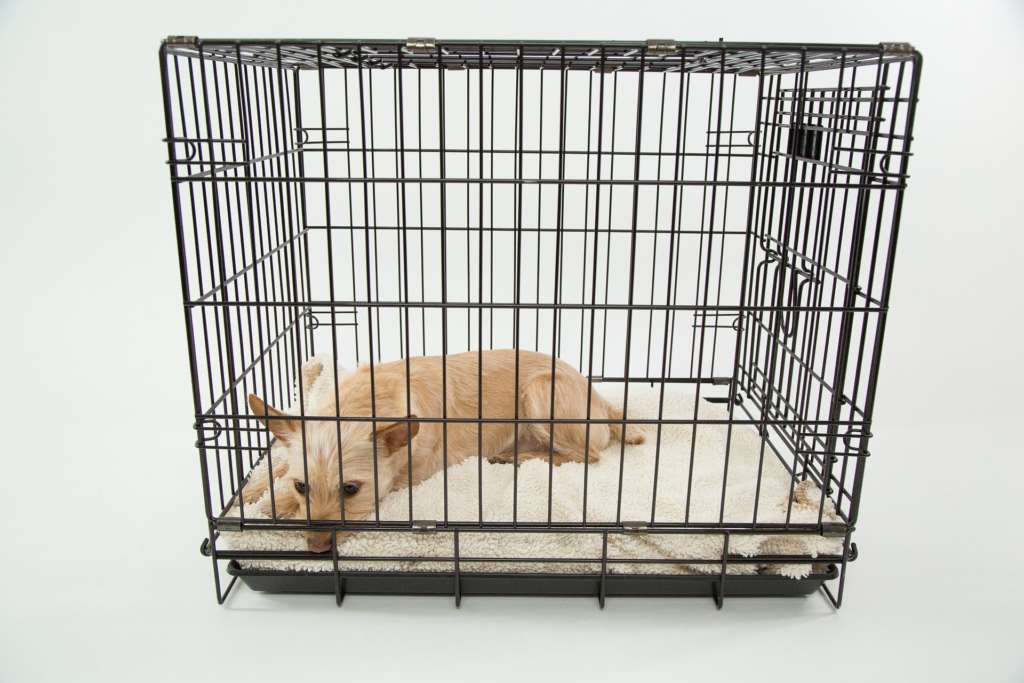

Establish The Crate As A Safe Space
We want puppies right away to see the crate as their own personal space, so it’s essential that we preserve that.
Remind everyone in the home that the crate is your puppy’s place and no one else’s. Don’t allow children or other animals in the home to invade, play in, or bother the puppy when they are in their crate, as it can leave them feeling teased, trapped, or encourage negative associations. It should always represent a safe place to retreat to when they want a break from the chaos of the home, or if they just need to take a nap.
Never Use The Crate As Punishment
Crate training is an excellent tool for raising and managing a puppy, but it should never be used for punishment. If your puppy is doing something you don’t like or has a potty accident in the house, engage proactively and positively with them and do not banish them to the crate. You never want your puppy to see the crate as a negative place, or somewhere they must go if they’ve done something wrong.
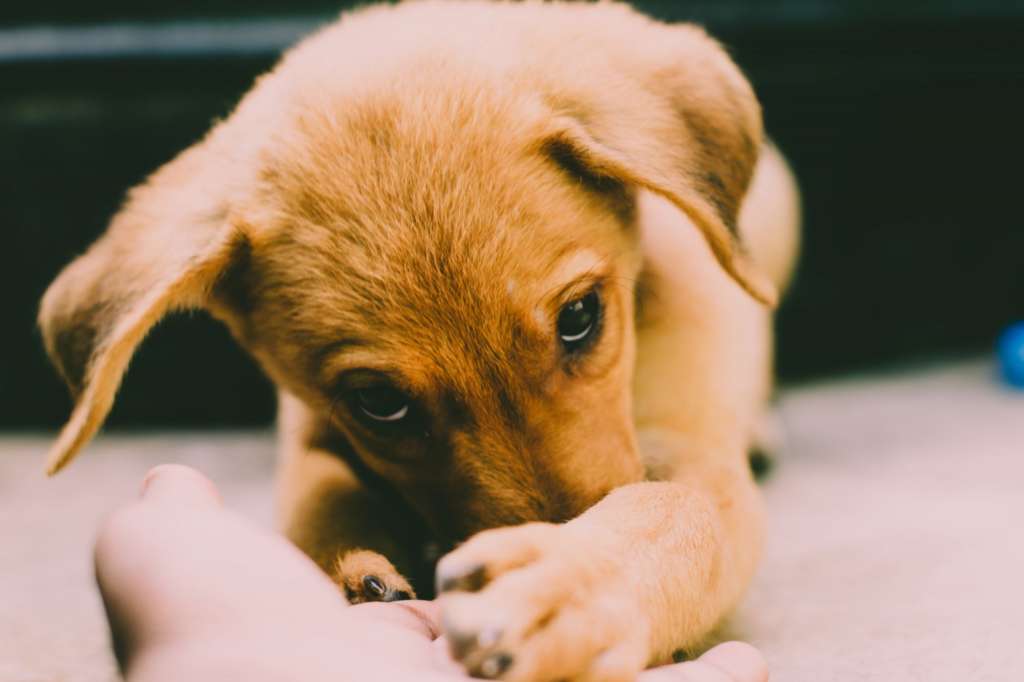

Did You Know?
Although crate training can be a very useful tool for raising your puppy, having puppies spend significant amounts of time confined daily is actually very specific to North America. Crates aren’t commonly used in Europe or Australia when raising puppies. In other parts of the world, people are more likely to puppy-proof part of the home, or keep the puppy with them more of the time.
Sassafras Lowrey is a dog trainer turned trick instructor turned writer who seriously loves dogs! She got involved with dog training as a teenager, but it wasn’t until her and her partner adopted a former street dog in 2011 that she realized she could combine her passion for dogs with her passion for writing! After looking into ways she could enrich her dog Charlotte’s life, and seeing other pet parents do the same, Sassafras decided to write books to help both dogs and their humans. Check out the following activity from her new book, Chew This Journal!



